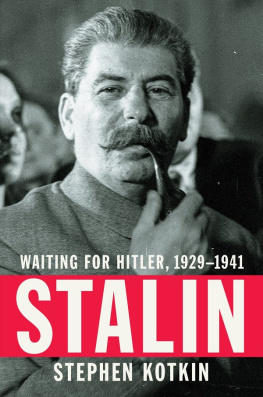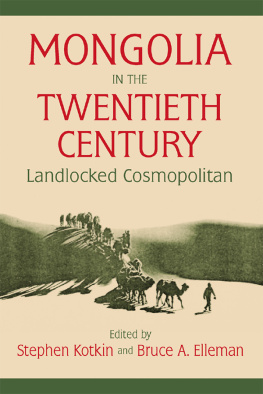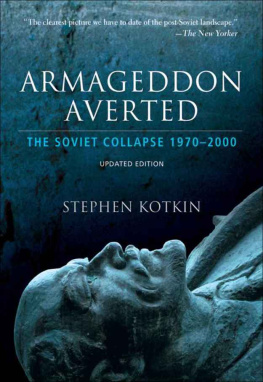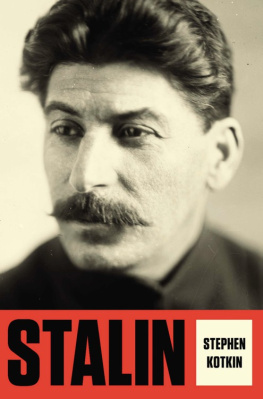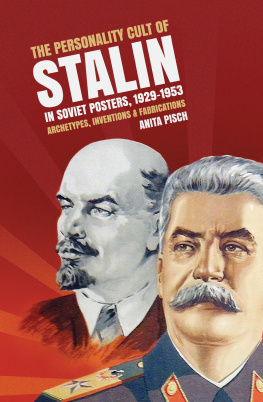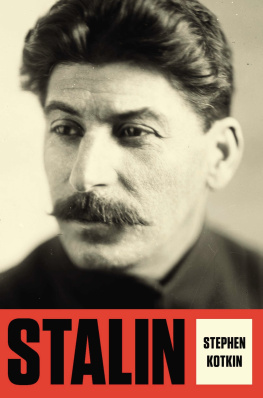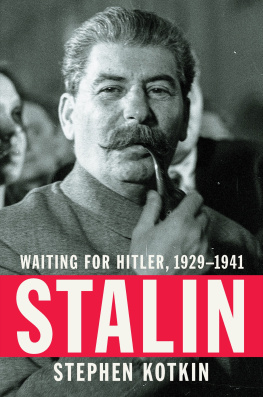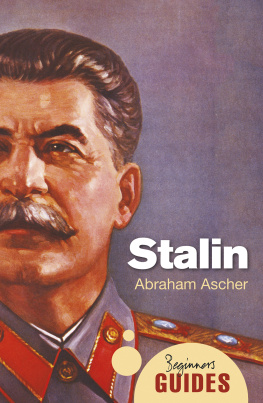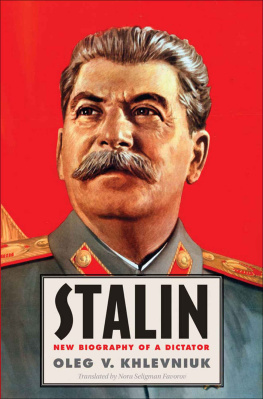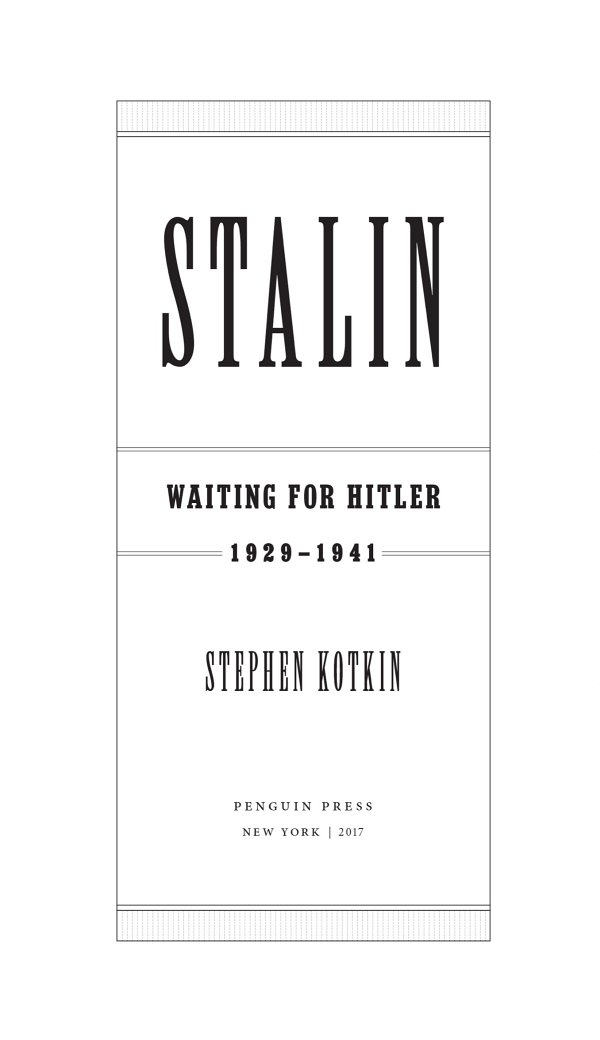ALSO BY S TEPHEN K OTKIN
Stalin:
Paradoxes of Power, 18781928
Armageddon Averted:
The Soviet Collapse, 19702000
Magnetic Mountain:
Stalinism as a Civilization
Steeltown, USSR:
Soviet Society in the Gorbachev Era
Uncivil Society:
1989 and the Implosion of the Communist Establishment
PENGUIN PRESS
An imprint of Penguin Random House LLC
375 Hudson Street
New York, New York 10014
penguin.com
Copyright 2017 by Stephen Kotkin
Penguin supports copyright. Copyright fuels creativity, encourages diverse voices, promotes free speech, and creates a vibrant culture. Thank you for buying an authorized edition of this book and for complying with copyright laws by not reproducing, scanning, or distributing any part of it in any form without permission. You are supporting writers and allowing Penguin to continue to publish books for every reader.
Photograph credits appear .
Kotkin, Stephen.
Stalin / Stephen Kotkin. volumes cm
Includes bibliographical references and index. Contents: Volume I. Paradoxes of power, 18781928.
ISBN 9781594203794 (hardcover)
ISBN 9780143127864 (paperback)
Volume II. Waiting for Hitler, 19291941.
ISBN 9781594203800 (hardcover) / ISBN 9780735224483 (e-book)
1. Stalin, Joseph, 18791953. 2. Stalin, Joseph, 18791953Psychology. 3. Heads of stateSoviet UnionBiography. 4. DictatorsSoviet UnionBiography. 5. Soviet UnionPolitics and government19171936. 6. Soviet UnionPolitics and government19361953. 7. Political cultureSoviet UnionHistory. 8. Soviet UnionHistory19251953. I. Title.
DK268.S8K65 2014
947.0842092dc23 [B]
2014032906
Maps by Jeffrey L. Ward
While the author has made every effort to provide accurate telephone numbers, internet addresses, and other contact information at the time of publication, neither the publisher nor the author assumes any responsibility for errors, or for changes that occur after publication. Further, publisher does not have any control over and does not assume any responsibility for author or third-party Web sites or their content.
Version_1
for Alex Levine and Joyce Howe
who, beginning with the rough patches in graduate school, held me together
Midway on lifes journey
I found myself in a dark wood,
for the straight path was lost.
D ANTE A LIGHIERI ,
The Divine Comedy, 13081321
It cannot be called virtue to kill ones fellow citizens, betray ones friends, be without faith, without pity, without religion; by these methods one may indeed gain power, but not glory.
N ICCOL M ACHIAVELLI ,
The Prince, 1513
CONTENTS
PREFACE
But if there isnt a tsar, whos going to rule Russia?
A LEXEI , 1917, when his father, Nicholas II, abdicated for both of them
T HROUGH THE FIRST THIRTY -NINE YEARS OF HIS L IFE, the achievements of Iosif Stalin (b. 1878) were meager. As a teenager, he had abandoned a successful trajectory, with high marks in school, to fight tsarist oppression, and published first-rate poems in a Georgian newspaper, which he recited in front of others. (To this day his beautiful, sonorous lyrics echo in my ears, one person would recall.) But his professionrevolutionarymade for a career of hiding, prison, exile, escape, recapture, penury. It had gotten to the point, in far northern Siberia, that even escape had become impossible. He persevered, known only to the tsarist police and some of his fellow revolutionaries, who were dispersed in remote internal exile, like him, or in Europe. Only the world-shattering Great War, the shocking abdication of the tsar and tsarevich in February 1917, the return of Vladimir Lenin to Russia that April thanks to imperial German cynicism, the suicidal Russia-initiated military offensive in June, and a fatal pas de deux between Prime Minister Alexander Kerensky and Supreme Commander Lavr Kornilov in August had altered Stalins life prospects. All of a sudden, he had become one of the four leading figures in an improbable Bolshevik regime. He played an outsized role in the 191821 civil war and territorial reconquest, and a foremost role in the invention of the Union of Soviet Socialist Republics. In 1922, five years removed from desolate isolation near the Arctic Circle, he found himself in the uncanny position of being able to build a personal dictatorship within the Bolshevik dictatorship, thanks to Lenins appointing him Communist party general secretary (April), followed by Lenins incapacitating stroke (May). Stalin seized that opportunity passionately and ruthlessly. By 1928, he had decided that 120 million peasants in Soviet Eurasia had to be forcibly collectivized. The years 191728 proved to be astonishingly eventful. But the years from 1929 through 1941the period covered in this volumewould prove still more so.
This volume, too, examines Stalins power in Russia, recast as the Soviet Union, and the Soviet Unions power in the world. But whereas in the preceding volume he was offstage for long stretches as global developments unfolded around him, now the opposite and, in fact, more difficult challenge of narration awaits: Stalin is present on nearly every page. He is now deep into the violent reshaping of all Eurasia that he announced at the end of volume I, continuing to micromanage the ever-expanding party-state machinery, delving into the granular details of armaments production and grain collections, while also conducting a comprehensive foreign policy touching all corners of the planet and, for the first time, overseeing cultural affairs. But volume II takes place largely in his office, and, indeed, in his mind. Whereas right through 1927, he had not appeared to be a sociopath in the eyes of those who worked most closely with him, by 192930 he was exhibiting an intense dark side. As the decade progresses, he will go from learning to be a dictator to becoming impatient with dictatorship and forging a despotism in mass bloodshed. Volume Is analytical burden of explaining where such power comes from remains, but volume II raises questions of why he arrested and murdered immense numbers of loyal people in his own commissariats, officer corps, secret police, embassies, spy networks, scientific and artistic circles, and party organizations. What could he have been thinking? How was this even possible?
Stalins mass terror of 193638 was a central episode, but not the central episode, of his regime in the period covered by this volume. That designation belongs, first, to the 192933 collectivization of agriculture, then to the 1939 Pact with Nazi Germany and its aftershocks. If Stalins foil in volume I was Trotsky (who, though politically vanquished, will haunt him more than ever), now a second materializes, and not a foreign exile wielding little more than a pen, but another dictator presiding over the rearmament of the greatest power on the continent.
Adolf Hitler was eleven years Stalins junior, born in 1889 in a frontier region of Austria-Hungary. He lost his father at age fifteen and his mother at eighteen. (The Jewish physician who tended to his mother would recall that in forty years he had never seen anyone as broken with grief over a mothers death as her son.) At age twenty, Hitler found himself on a breadline in Vienna, his inheritance and savings nearly spent. He had twice been rejected from Viennas Academy of Fine Arts (sample drawing unsatisfactory) and was staying in a homeless shelter behind a railway station. A vagrant on the next bed recalled that Hitlers clothes were being cleaned of lice, since for days he had been wandering about without a roof and in a terribly neglected condition. The vagrant added that Hitler lived on various shelters bread and soup and discussed politics. With a small loan from an aunt, he got himself into better quarters, a mens home, and managed to find odd jobs, such as painting picture postcards and drafting advertisements. He also frequented the citys public libraries, where he read political tracts, newspapers, the philosopher Schopenhauer, and the fiction of Karl May set in the cowboys-and-Indians days of the American West or the exotic Near East. Hitler dodged the Austrian draft and the police. When they finally caught up with him, they judged the undernourished and gloomy youth to be unfit for service. He fled across the border to Munich, and in August 1914 he joined the German army as a private. He ended the Great War still a private, but its aftermath transformed his life prospects. He would be among the many who migrated from left to right in the chaotic wake of imperial Germanys defeat.

